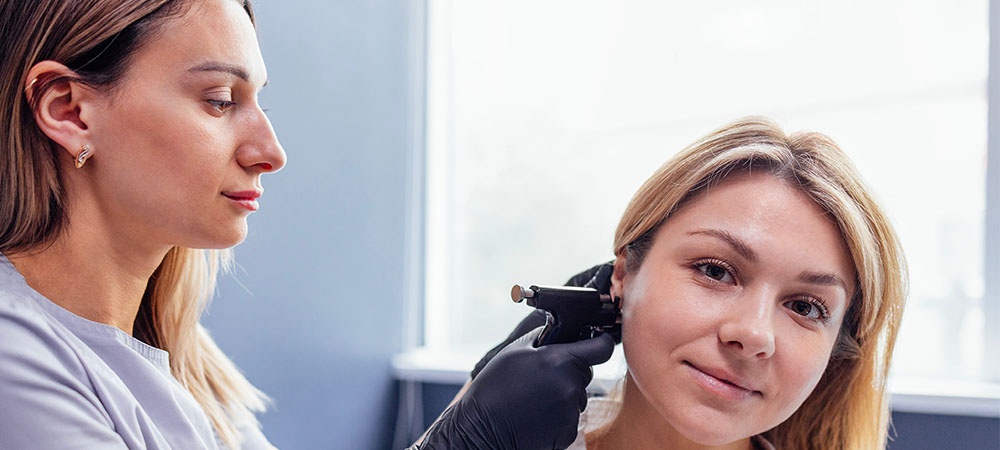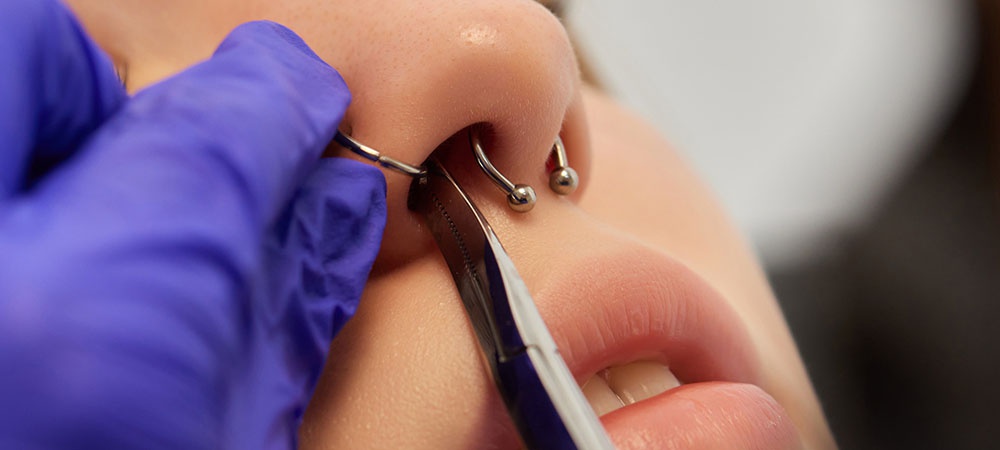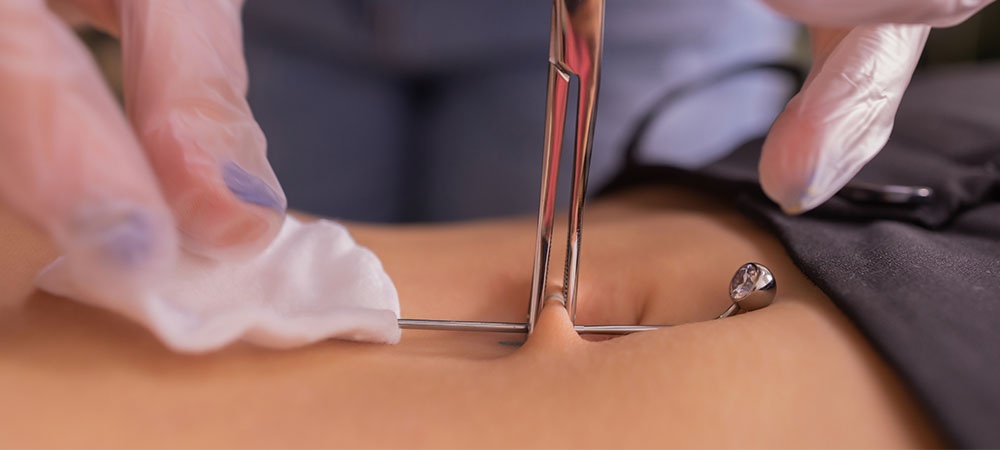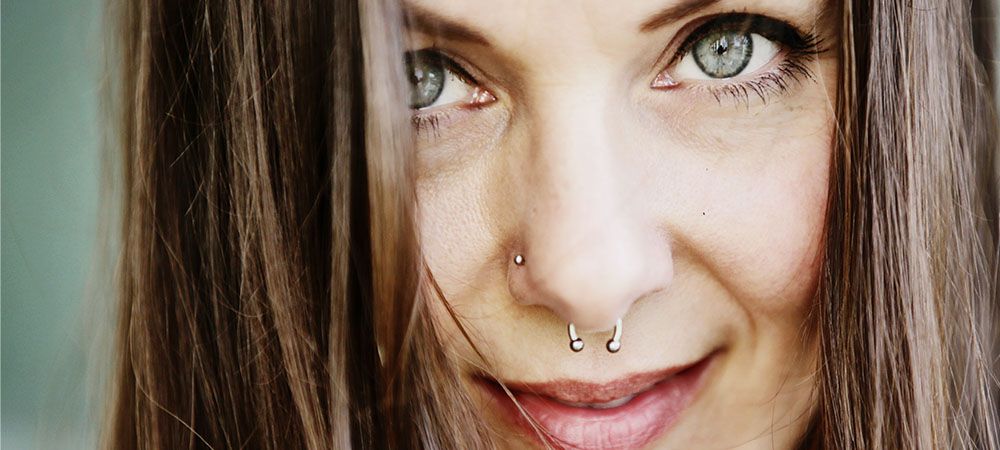Safety First: Understanding the Importance of Sterilization in Piercing Studios
Getting a new piercing is always a good idea for body art. But, understanding the importance of sterilization for piercing is vital. Nobody wants to contract a skin reaction or an infection because they got a piercing.
Sterilization in piercing studios is important because of how easy it is to get infected after a piercing. According to a 2023 research paper by the CDC, bacterial infections occur frequently after a piercing. These infections may be minor or major. Treatment for some of these complications may require surgical operations.
We’re not telling you not to get a piercing. Our aim is that you ensure your piercer sterilizes all equipment. Here, we’ll examine the importance of sterilizations in piercing studios and other precautions for getting a body piercing.
What Are The Benefits of Safety During Piercings
Some of the benefits of sterilizing piercing equipment include;
Prevents Allergic Reaction
A piercing means you’re creating a hole in a part of your body. This hole is tiny, but enough for bacteria to infect.
The skin may react to this bacteria infection in the form of allergies. In turn, this may show up as rashes that never look good and cause skin itchiness.
The allergies may not always occur immediately after the piercing or at its location. For example, you can pierce your belly button and get an allergy reaction on your face.
You can avoid any of these complications when you sterilize piercing materials. It reduces the risks of allergies.
Stops Skin Diseases
Skin disease is another reason to practice safety during piercings. Like with allergies, skin diseases can be minor or significant. The most common type of skin disease is redness around the piercing area.
The pierced area can also swell badly. In addition, the swollen area may give off a discharge after a while. The discharge may look like pus.
In addition, another skin disease caused by piercing may also start as a scar. If unattended, it may cause a keloid.
Keloids are overgrown scars that grow on the skin. It doesn’t affect your health, but it can be unattractive. It usually affects the ears, cheeks, chest, and shoulders.
Prevents transfer of Blood-related Diseases
The most dangerous and apparent importance of sterilization for piercing is the possibility of bloodborne illnesses. There’s no way you can pierce without having blood drops, no matter the expertise of the piercer. As such, piercing puts you and the piercer at risk.
Some of the blood-related diseases you may contact include hepatitis B and C, tetanus, and the dreaded HIV. Most of these diseases require complex treatment methods that may be lifelong.
Blood-related diseases occur during piercing when devices used carry the viruses. The best way to avoid blood-related diseases is to use new piercing equipment only.
Improve the Lifespan of a Reusable Piercing Device
Although not advisable, certain piercers use reusable devices.
A piercing gun is an excellent example of such a device. The piercer will only use new needles for every new client.
Sterilizing the gun makes it safe for use and can also make it last longer.
Related Article: Tattoo Risks And The Precautions That You Should Take

How to Sterilize Piercing Equipment
Some of the best sterilization practices for piercing include;
Thorough and Constant Cleaning
Regular cleaning should be a characteristic of a standard piercing studio. A piercing studio is almost like a surgical room. Every corner must be clean.
Cleaning in a studio doesn’t stop at the piercing device and accessories. The chairs, tables, and other non-piercing equipment should be clean.
At Piranha Studio, everything from what you wear to every item is clean. We take time to remove visible dirt.
Constant Use of Disinfectants
Cleaning with soap and water is excellent. But it’s not sufficient for a task as delicate as piercing.
We use disinfectants to help clean every item. In addition, we ensure that the disinfectants are standard and tested to remove blood-related bacteria.
It’s better to use the disinfectants directly on all items for the best results. You can immerse the piercing devices in the disinfectants before and after use.
Using Autoclave Sterilization
The innovation of an autoclave amplifies the importance of sterilization for piercings. An autoclave is a sterilizing tool used to remove bacteria.
This equipment is helpful in the piercing industry. But its uses cut across several sectors, including medicine.
An autoclave usually has a few parts, including;
- The chamber. This part is the location where the operator places the items for sterilization.
- A water container. Autoclaves work with steam, so water must be in the device before functioning.
- A heating element. This part is what increases the temperature of the water.
- A monitor. This monitor indicates details like — temperature, water level, and timer.
Using an autoclave is very simple. Follow these steps:
- Ensure there’s enough water in the equipment.
- Set the temperature to the desired level, usually based on what you’re sterilizing.
- Set a time limit for the sterilization process. Thirty minutes is okay to sterilize piercing equipment.
- Wait till it finishes.
You can use an autoclave to sterilize any equipment — so long it can fit into the chamber.
It’s always better to sterilize piercing tools in a sterilization bag or pouch. The autoclave will be effective if you put the items without a pack.
But remember, sterilization uses heat, so removing them with bare hands is not easy. Besides, what’s the importance of sterilization for piercing when you reintroduce pathogens from your hand?
Using a sterilization pouch means you’ll require a higher temperature than when sterilizing bare tools. A temperature of 121°C is okay for essential piercing tools, while you need over 130°C with a sterilization bag.
Sterilization by Chemicals and Alcohol
Sterilizing piercing tools with chemicals isn’t very popular. But it’s a common sterilization technique.
It involves immersing the equipment in the chemical for an amount of time. The downside of this sterilization method is the long hours required.
In addition, there’s room for errors.
Sterilization with Dry Heat or Fire
Fire is an ancient technique used for sterilization. But, it’s not the safest based on the type of material used. Instead, dry heat is a better option.
Dry heat is a sterilizing option similar to an autoclave. The only difference is the heat from an autoclave is steam. Dry heat is better for items that moisture can affect.
Sterilizing by Gas
Gas sterilization is the industry standard type of sterilizing piercing tools. Most new piercing equipment has had this sterilization technique from its source.
The gas used for this sterilization is ethylene oxide. The manufacturer passes this gas into the piercing equipment after packaging. And the device will remain safe until you unpack it.

Safety Precautions for Getting a Body Piercing
Government authorities already do their best to ensure piercing studios in Canada are up to standard. A typical piercing studio in Ontario undergoes regular inspections every year.
In Toronto, the public health department checks piercing studios yearly. You can always call the department to ensure your proposed studio meets the standard.
But it would be best to do your due diligence as the government can’t do it all. Here are some precautions for getting a body piercing;
Choose a Clean Studio
Your first line of action is finding a clean studio. You can easily spot an unclean piercing studio from the environment and a few observations.
Note that cleanliness doesn’t always translate to beauty. A piercing studio may have great aesthetics and still be very dirty.
Ask for Sterilization Techniques
The next way to guarantee your safety during piercings is by asking questions about their sterilization style. Any standard piercer shouldn’t take offense at this request. It only shows that you know the importance of sterilization for piercing – something they should know about.
After asking, try to confirm that they perform the sterilization tasks. If the company claims to utilize pre-sterilized tools, check the packaging to confirm.
Check for Spore Tests
An autoclave is a standard device you’ll find in every piercing studio. But, not all autoclave equipment is working.
The best way to test the precision of an autoclave is through a spore test. A spore test involves inserting a bacteria sample that can survive under high heat into the autoclave.
After running through the autoclave, they should run a test and ensure no trace of bacteria. If the piercing studio can’t provide a recent spore test, don’t trust them.
Choose Reusable Equipment over Piercing Guns
Part of the major precautions for getting a body piercing is using disposable items as much as possible. Most disposable items are new and already sterilized by their manufacturers.
Therefore, they’re safer for your piercings. Allowing a piercer to use a reusable item increases your chances of infections.
Piercer Must Wear Gloves After Washing Hands
Diseases caused by piercing don’t rely on the tools alone. You need to check the process of the piercer.
Professional piercers must wash and disinfect their hands before anything. After that, they wear disposable gloves before handling any of the items.
Related Article: Walk-In Tattoo In Toronto: Can I Get One And What Do I Need To Know?

Choose Piranha Studio for the Best Sterilization Practices for Piercings
Knowing the importance of sterilization for piercing will protect you from possible health hazards. But there’s nothing better than finding the perfect piercing studio that adheres to the safety techniques discussed.
Piranha Studio should come to mind if you’re searching for a piercing studio that prioritizes your safety. We are a team of piercing experts who understand the need for sterilization in our job.
Visit our studio for the highest standards of safety and sterilization. Or call +1 905 605 9191 to book an appointment with us.

